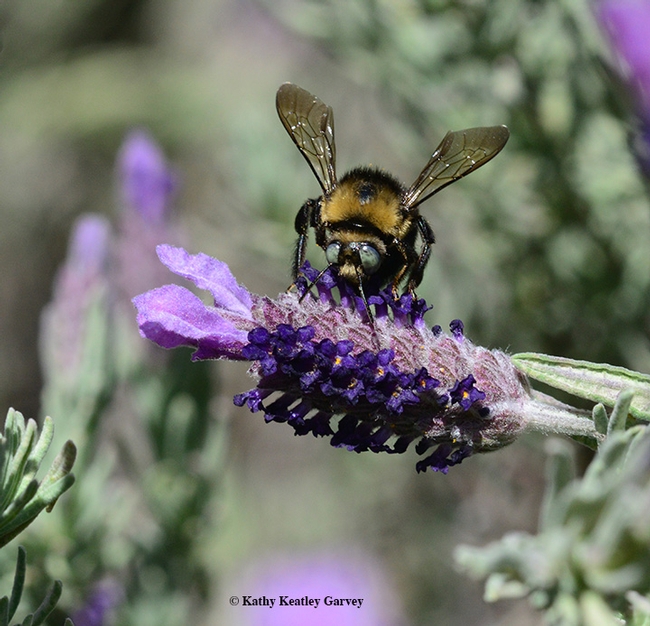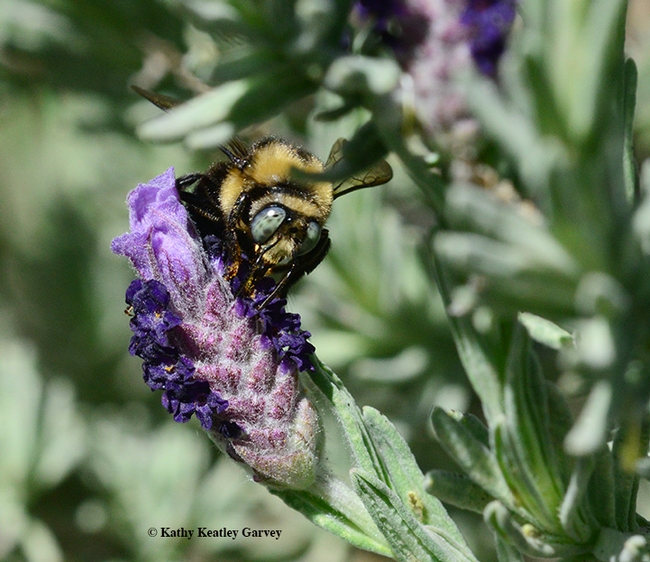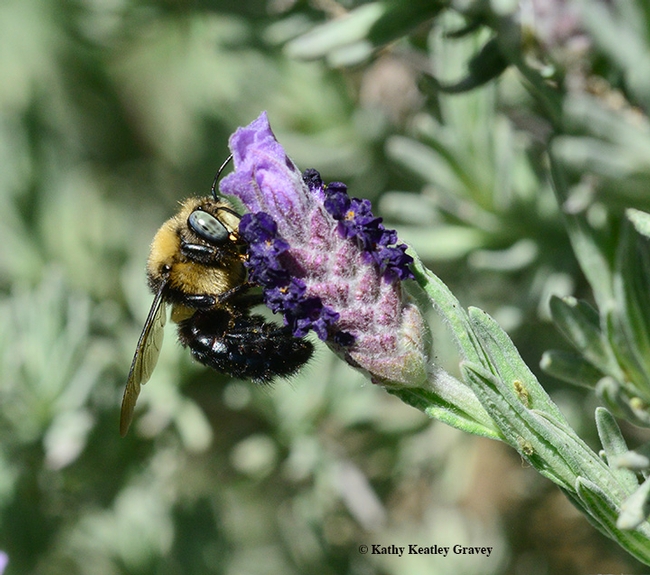It's spring and it's loud in the Spanish lavender patch.
The girls--the honey bees--are buzzing furiously as they forage among the blossoms, but so are the boys, in this case the mountain carpenter bee, Xyclocopa tabaniformis orpifex. The girls are there for the pollen and nectar to take back to their colonies, and the boys are there for some flight fuel. And to find mates.
Xyclocopa tabaniformis orpifex is one of three species of California carpenter bees: the others are Xyclocopa varipuncta (the largest one, about the size of a bumble bee), and Xyclocopa californica. All females are mostly black. The male Xyclocopa varipuncta, aka "the teddy bear bee," is a golden with green eyes. The other males often have yellow hair on their head or thorax.
The carpenter bees usually fly from March through October, according to California Bees and Blooms, A Guide for Gardeners and Naturalists, a University of California production featuring the work of Gordon Frankie Robbin Thorp, Rollin Coville, and Barbara Ertter (Thorp is a distinguished emeritus professor of entomology at UC Davis, Frankie is a professor at UC Berkeley, and Coville and Ertter are also affiliated with UC Berkeley).
A handy identification pocket guide--a companion to California Bees and Blooms--is Common Bees in California Gardens, published by the University of California Agriculture and Nature Resources. It will help you identify 24 bees and you can lean about the distribution, flight season, nesting habits, floral hosts and how each bee species transports pollen. You'll see beautiful images by noted photographer Coville, who holds a Ph.D. in entomology from UC Berkeley.
Excellent publications! The more you know about bees, the more likely you are to protect them and plant for them.
Ah, spring! It's loud in the Spanish lavender patch...
Attached Images:

A male mountain carpenter bee, Xyclocopa tabaniformis orpifex, nectaring on Spanish lavender. (Photo by Kathy Keatley Garvey)

A male mountain carpenter bee, Xyclocopa tabaniformis orpifex, peers at the photographer. (Photo by Kathy Keatley Garvey)

Side view of the male mountain carpenter bee, Xyclocopa tabaniformis orpifex, nectaring on Spanish lavender. (Photo by Kathy Keatley Garvey)